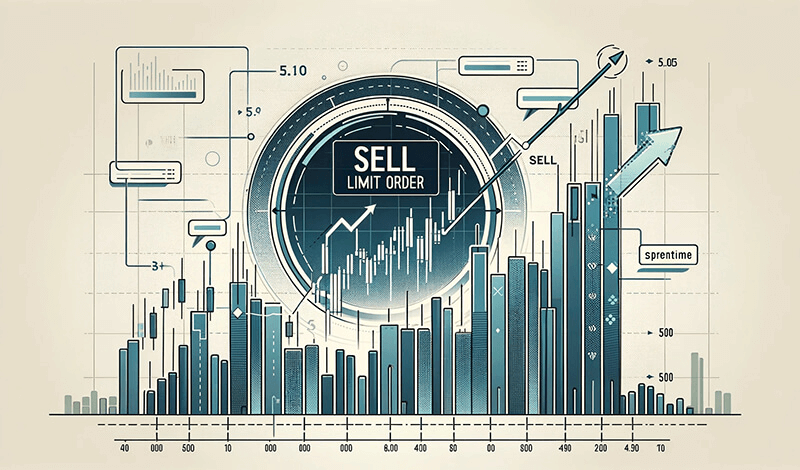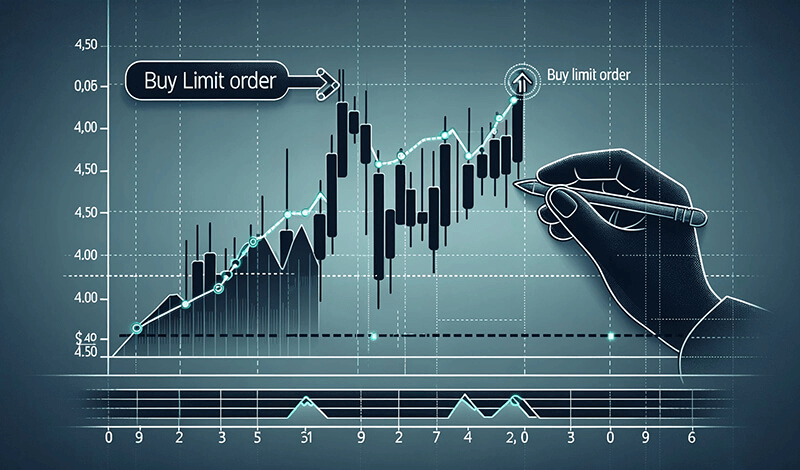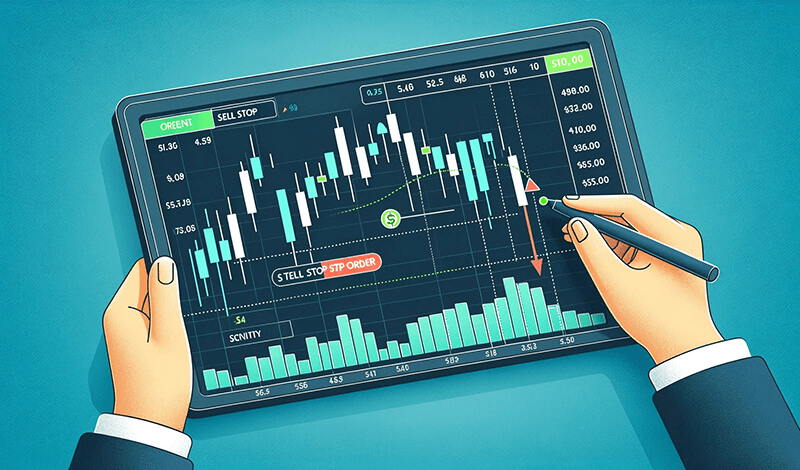In the fast-paced world of trading, a pending order stands as a pivotal tool for traders aiming to capitalize on market opportunities without the need to be constantly online. This guide delves into the essence, operation, types, and strategies associated with pending orders, particularly in the context of the MetaTrader 4 (MT4) platform. We'll explore how pending orders compare with market orders, their duration, cancellation processes, and the concept of protective orders.
A pending order in the world of trading is a powerful tool that offers traders the ability to pre-define the price at which they wish to enter or exit the market, without requiring them to manually execute the trade at the moment the price is reached. This type of order is essentially a conditional request made to a broker, indicating that a trade should only be executed when certain criteria, specified by the trader, are met. Such criteria often include the asset's price reaching a specific level that the trader believes will be pivotal for future price movements.
The beauty of a pending order lies in its strategic flexibility. It allows traders to capitalize on anticipated market movements without the need to constantly monitor market prices. This is particularly useful in volatile markets where prices can fluctuate rapidly within short periods. By setting a pending order, traders can ensure they don't miss out on potential trading opportunities, even if they are not actively watching the market at every moment. It provides a methodical approach to trading, enabling traders to make calculated decisions based on their market analysis and trading strategy.

Furthermore, pending orders can be classified into several types, each designed to suit different trading strategies and market conditions. These include Buy Limit, Sell Limit, Buy Stop, and Sell Stop orders, among others. Each type of pending order has its specific use case, offering traders a range of options to enhance their trading efficiency and effectiveness. Whether aiming to buy at a price lower than the current market price or sell at a price higher, pending orders equip traders with the means to automatically execute these strategies, aligning with their market predictions and trading goals.
Pending orders operate on a simple yet profoundly strategic principle: they are set to automatically execute a buy or sell transaction once certain predefined market conditions are met. This principle allows traders to set their entry or exit points at price levels they deem significant for future price movements, without having to monitor the market continuously. For instance, a trader can place a Buy Limit order if they believe the market will rebound after reaching a certain lower price level. Conversely, a Sell Stop order might be used in anticipation of a further drop in price after a key support level is breached. The execution of these orders relies on the market meeting the conditions specified by the trader, offering a hands-off approach to managing trades based on pre-established strategies.
The advantages of utilizing pending orders are manifold, providing traders with both tactical and psychological benefits. Tactically, pending orders enable traders to execute their trading strategies automatically, ensuring they don't miss profitable opportunities even when away from their trading desk. This automatic execution is particularly valuable in fast-moving or volatile markets, where price levels can change swiftly and unpredictably. Psychologically, pending orders help traders maintain discipline by sticking to their trading plans, reducing the temptation to make impulsive decisions based on short-term market movements. This disciplined approach can lead to more consistent trading outcomes and better risk management.
Moreover, pending orders offer the advantage of strategic timing and price targeting, allowing traders to enter or exit the market at more favorable conditions. By setting these orders, traders can potentially increase their profit margins by buying low and selling high, based on their analysis of market trends and price levels. Additionally, the use of stop orders as part of the pending order arsenal can protect traders from significant losses by automatically closing out positions at predetermined loss thresholds. Overall, the operational principles and advantages of pending orders make them an indispensable tool for traders aiming for efficient, disciplined, and strategically sound trading practices.
MT4, a widely-used trading platform, supports various types of pending orders, each catering to different strategies and market conditions:




These orders are instrumental for traders looking to automate their trading strategies and capitalize on anticipated market movements.
Pending orders and market orders are two fundamental concepts in trading that cater to different strategies and trading styles. While both serve the purpose of initiating trades, they operate under different conditions and are used in various scenarios. A market order is executed immediately at the current market price, making it the go-to option for traders looking to enter or exit the market without delay. This immediacy ensures that the trade is executed, but it does not guarantee the execution price, especially in fast-moving or volatile markets where prices can fluctuate significantly in short periods.
On the other hand, pending orders offer traders the ability to specify the price at which they wish to enter or exit the market, providing a higher degree of control over the execution price. This type of order is essential for traders who have a specific entry or exit strategy based on price levels. Pending orders, such as Buy Limit, Sell Limit, Buy Stop, and Sell Stop, allow for strategic planning and are particularly useful in situations where a trader cannot monitor the markets continuously. They enable traders to capitalize on expected price movements without having to execute trades manually at the moment.
The choice between using a pending order or a market order often comes down to the trader's objectives, market analysis, and the specific conditions of the market at the time. Market orders are best suited for situations where execution speed is more critical than the execution price, such as in highly liquid markets where price changes are minimal. Conversely, pending orders are ideal for more calculated strategies that rely on entering or exiting the market at predetermined price points. This strategic difference highlights the importance of understanding both order types to effectively navigate trading platforms and markets, ensuring traders can execute their strategies under varying market conditions.
A protective order in the context of trading is a specific type of pending order designed to safeguard a trader's investment by minimizing potential losses and locking in profits. These orders are essentially risk management tools that automatically execute a trade when the price of a security reaches a predetermined level. The most common forms of protective orders are stop-loss orders and take-profit orders. A stop-loss order is set to close a position at a certain price to prevent further losses if the market moves against the trader's position. Conversely, a take-profit order is placed to automatically sell a security once it reaches a certain price level, ensuring that the trader captures a desired level of profit before any potential downturn in the market.
The strategic use of protective orders is crucial for both novice and experienced traders, as it introduces a systematic approach to risk management by predetermining exit points for both losing and winning trades. This preemptive measure allows traders to define their risk tolerance and potential profit targets, making their trading plan more disciplined and objective. Protective orders, by their very nature, help traders to avoid emotional decision-making and overexposure to market volatility. In essence, they serve as a safety net, ensuring that traders can participate in the markets with a predefined strategy for protecting their capital and profits, regardless of how the market conditions may change.
For further insights into the practical application of pending orders in trading strategies, watch a detailed explanation on YouTube: Placing Pending Orders on MT4.
The strategic use of pending orders goes beyond simple buy and sell triggers. It encompasses comprehensive planning regarding entry points, exit points, risk management, and capitalizing on market analysis. Traders often use these orders in conjunction with technical analysis, market trends, and economic indicators to make informed decisions.
The implementation of pending orders can significantly enhance a trader's ability to execute a disciplined trading strategy, ensuring that decisions are made based on predefined criteria rather than emotional responses to market fluctuations. This discipline is crucial for long-term success in trading.
This guide has introduced the fundamentals of pending orders, including their types, operation, advantages, and strategic applications within the MT4 platform. Understanding these concepts is vital for traders looking to refine their trading approach, manage risk effectively, and exploit market opportunities with precision.
When incorporating pending orders into a trading strategy, practical considerations are key to maximizing their effectiveness while minimizing risks. One crucial factor is the precise setting of entry and exit points, which should be based on thorough market analysis and a clear understanding of price movements and volatility. Traders need to consider historical data, current market trends, and potential future events that could influence prices. This analytical approach allows traders to set their pending orders at price levels that align with their trading goals and risk management strategies. Additionally, the choice between different types of pending orders—such as Buy Limit, Sell Limit, Buy Stop, and Sell Stop—should reflect the trader's expectations for market direction and volatility, enabling them to capitalize on anticipated price movements.
Another important consideration is the adjustment and cancellation of pending orders. Market conditions can change rapidly, and a pending order set yesterday may not be relevant or beneficial today. Therefore, traders must regularly review their pending orders in light of new market information and adjust or cancel them as needed. This flexibility allows traders to stay responsive to the market and adjust their strategies to align with evolving conditions. Moreover, understanding the specifics of how pending orders work on their chosen trading platform is essential, as different platforms may have variations in order execution and options for setting order parameters. Ultimately, the successful use of pending orders hinges on a trader's ability to combine strategic planning with adaptability, ensuring that their trading actions remain aligned with their overall investment objectives.

Advanced strategies involving pending orders provide traders with nuanced control over their trading decisions, allowing for more dynamic responses to market conditions. One notable strategy is the use of OCO (One Cancels the Other) orders, a powerful tool in a trader's arsenal for managing opportunities and risks. By placing two contrasting orders—for instance, one buy limit and one sell stop—traders can cover both potential upward and downward market moves in intraday trading. The execution of one order automatically cancels the other, ensuring that traders remain positioned to benefit from significant price movements without the risk of entering two opposing trades. This approach is particularly effective in markets prone to sudden swings, enabling traders to set strategic entry points in advance, regardless of which direction the market trends.
Additionally, pending orders can be part of more complex hedging strategies that protect investments from unfavorable shifts in currency values or stock prices. For example, by using a combination of buy and sell limit or stop orders, traders can effectively bracket the current market price, potentially capturing gains on either side of price movements. These strategies require a deep understanding of market indicators and a clear analysis of risk versus reward. By employing advanced pending order strategies like OCO orders and hedging tactics, traders can navigate the intricacies of the financial markets with greater confidence and precision, optimizing their trading outcomes while managing risk exposure.
The Duration of Pending Orders
A common question among traders is how long a pending order remains active in the market. The duration can vary widely depending on the trader's preference, the trading platform used, and specific market conditions. Orders can be set to expire after a certain period or remain active until the trader manually cancels them or they are triggered by market movements.
To further refine your understanding and application of pending orders, integrating insights from credible external resources can provide a broader perspective and more in-depth analysis. Websites like Investopedia offer comprehensive guides and articles on various trading strategies, including the use of pending orders. Additionally, real-time market news, NordFX learning center and analysis platforms can offer actionable insights that inform the strategic use of pending orders based on current market conditions.
Utilizing Pending Orders for Strategic Trading
In conclusion, pending orders are a versatile and powerful tool in the trader's arsenal, offering the ability to strategize with precision and capitalize on anticipated market movements. Whether through employing basic order types like Buy Limit or Sell Stop or more advanced strategies involving combinations of orders, traders can significantly enhance their trading efficacy. Mastery of pending orders, coupled with a robust understanding of market dynamics and an effective risk management plan, can lead to more disciplined, successful trading outcomes.
Remember, the successful application of pending orders relies not only on technical knowledge but also on continuous learning and adaptation to the evolving market landscape. By staying informed, seeking out educational resources, and practicing diligent risk management, traders can leverage pending orders to navigate the markets more effectively and achieve their trading objectives.
Q: How long does a pending order take to execute? A: Execution time for a pending order depends on the market reaching the specified conditions set by the trader. There is no set timeframe; it could happen within minutes or take days, contingent upon market movements.
Q: Can you stop a pending order once it's placed? A: Yes, traders can cancel or modify pending orders before they are executed. This flexibility is vital for adjusting strategies in response to changing market dynamics.
Q: What's the difference between a pending order and a market order? A: A market order is executed immediately at the current market price, while a pending order is set to execute when certain pre-defined market conditions are met, offering more control over the entry or exit price.
Q: What is a protective order in trading? A: A protective order, such as a stop-loss or take-profit order, is designed to close an open position at a specified price to protect the trader from substantial losses or to lock in profits.